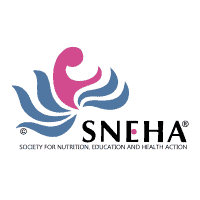- About AVPN
-
-
-
About AVPN
Who We Are
We are a leading ecosystem builder that is increasing the flow of financial, human, and intellectual capital from Asia and around the world into the social sector in Asia. We provide a network of peers, rigorous learning programmes, and innovative capital mobilization opportunities that make sure resources are more effectively deployed.
-
-
-
- Members
-
-
-
Membership Benefits
Unrestricted access to AVPN research reports and case studies
Access market-specific snapshots and opportunities
Increased visibility for events, programs and insights via AVPN website, blog, newsletters and social media channels
Leverage the AVPN platform to bring under-represented social issues top of mind for more than 600 social investors
-
-
-
- Resources
-
-
-
Resources
Highlights of the week
Trust-Based Philanthropy
In the face of increasingly complex and, sometimes rapidly, changing needs on the ground, it is crucial to take a step back and reconsider the status quo.
APAC Sustainability Seed Fund 2.0
By leveraging the success of the first round of the APAC Sustainability Seed Fund, AVPN continues to mobilise continuum of capital into supporting climate solutions in the region.
Faith and Giving
Faith, and the values, belief systems, moral codes, and religious doctrines, that underlie it, shape much of philanthropy across the world. From addressing needs in underserved communities to investing in sustainable energy solutions, faith-aligned givers are demonstrating that compassion can be a catalyst for a more just and equitable world. However, the fundamental drivers of faith-aligned giving often remain unexamined.
-
-
-
- Markets
-
-
-
Markets
We are a leading ecosystem builder that is increasing the flow of financial, human, and intellectual capital from Asia and around the world into the social sector in Asia. We provide a network of peers, rigorous learning programmes, and innovative capital mobilization opportunities that make sure resources are more effectively deployed.
Explore Markets
-
-
-
- Impact Communities
-
-
-
Impact Communities
-
-
-
- Capital Mobilisation
-
-
-
Capital Mobilisation
Featured Deals
Socio-Economic Empowerment of Women
Climate Action and Environment, Education, Financial Inclusion, Gender, Livelihood and Poverty Alleviation
Solve Education: Education through Innovative Learning Platform
Education, Employability, Livelihood and Poverty Alleviation
Lotus Petal Sr. Sec School, Gurugram
Education, Employability, Health
IT Training Against Poverty in Cebu
Education, Employability, Livelihood and Poverty Alleviation
IT Vocational Training Against Poverty
Education, Employability, Livelihood and Poverty Alleviation
Gigatonne: Addressing Problems within the Carbon Credits Market
Climate Action and Environment, Financial Inclusion, Gender, Livelihood and Poverty Alleviation
-
-
-
- Events
-
-
-
Events
Upcoming Signature EventsAVPN Global Conference 2024
23 April 2024
-
25 April 2024
Signature Event
Upcoming Events
Restoring Equilibrium: SVCA 2024 Annual Conference – Seeking Balance in A Turbulent World
16 May 2024
-
-
-
SNEHA: Prevention of Violence Against Women in India
SNEHA’s program aims to develop high‐impact strategies for primary prevention, ensure survivors’ access to protection and justice, empower women to claim their rights in India.
By

SNEHA (Society for Nutrition, Education and Health Action)
Click here to learn more about the Impact Organisation
This is member exclusive
content. Click here to unlock
Social causes
Beneficiaries
SDGs covered
Endorsed by
Market of Implementation
- India
Problem
Gender-based violence (GBV) or violence against women and girls (VAWG), is a global pandemic that affects 1 in 3 women in their lifetime. The Convention on the Elimination of All Forms of Discrimination Against Women was signed by 189 countries, including India, in 1980.The United Nations declared a response to violence against women and girls imperative in 2006, and it was identified as a health priority in World Health Organization (WHO) guidelines of 2013. Elimination of violence against women and girls in public and private is a target for the fifth Sustainable Development Goal.
However, there is little evidence of improvement. Globally, 30% (95% CI 28, 32) of women have ever experienced physical or sexual violence by an intimate partner, or sexual violence by a non-partner. The question of how to achieve substantial reductions in violence against women in low- and middle-income countries is central to current debate.
Solution
At SNEHA, we believe the ultimate goal of prevention is to stop something from ever happening. Violence against women and children is, however, a ‘wicked’ problem. It cuts across class, caste, culture and geographical boundaries and its determinants are both multilevel and intersectional. This means that it is imperative that we act at all levels and with an understanding of the intersectionality.
Using a socio-ecologic model as a framework for action at different levels to prevent violence, from the individual to the home to the community to society, we tackle the interplay between levels and intersectional factors through primary, secondary and tertiary prevention strategies.
Primary prevention activities are carried out through campaigns and group education with women’s and men’s groups, leading to individual voluntarism to identify, respond to and refer cases of violence against women and children. Secondary prevention is offered through delivery of comprehensive services that provide counselling.
















